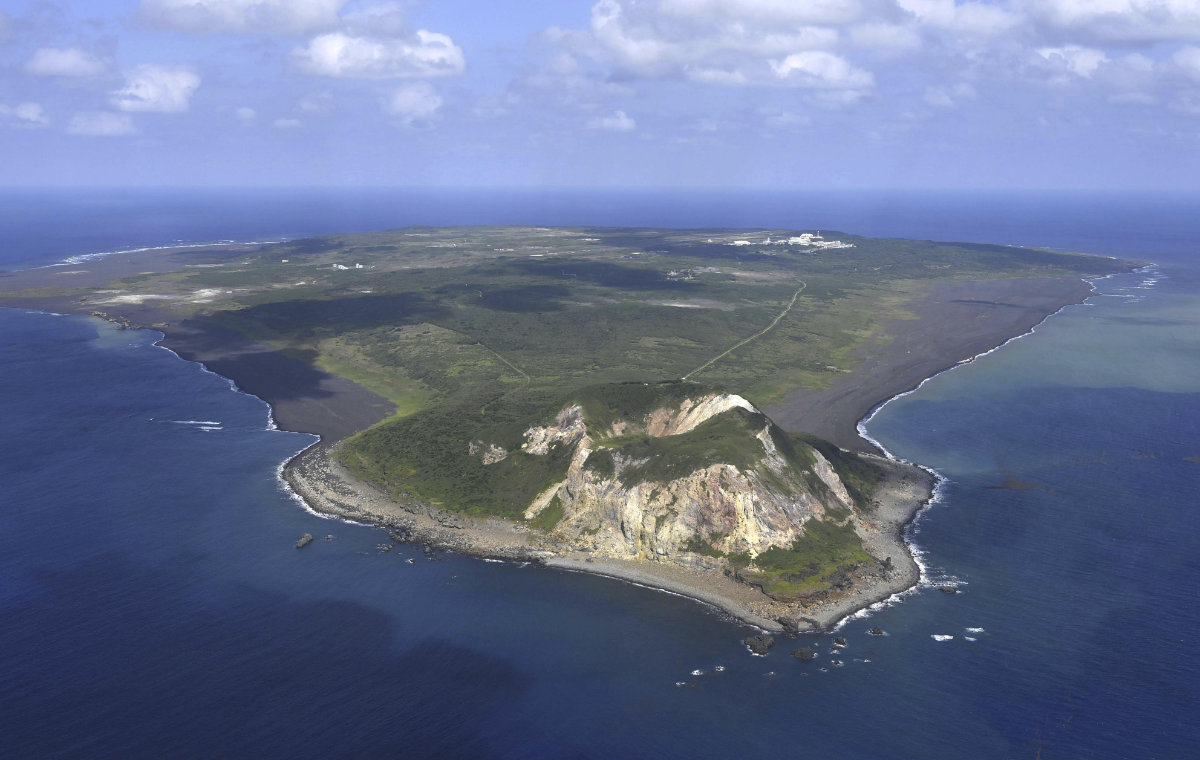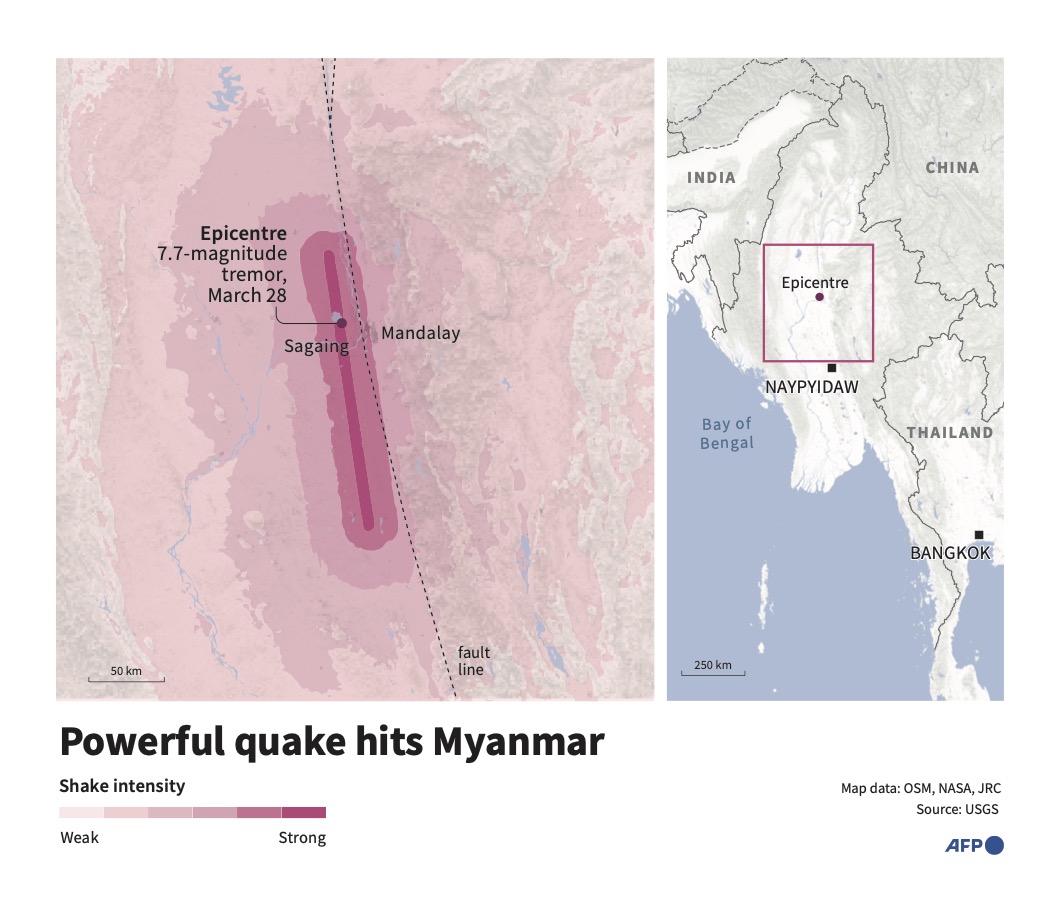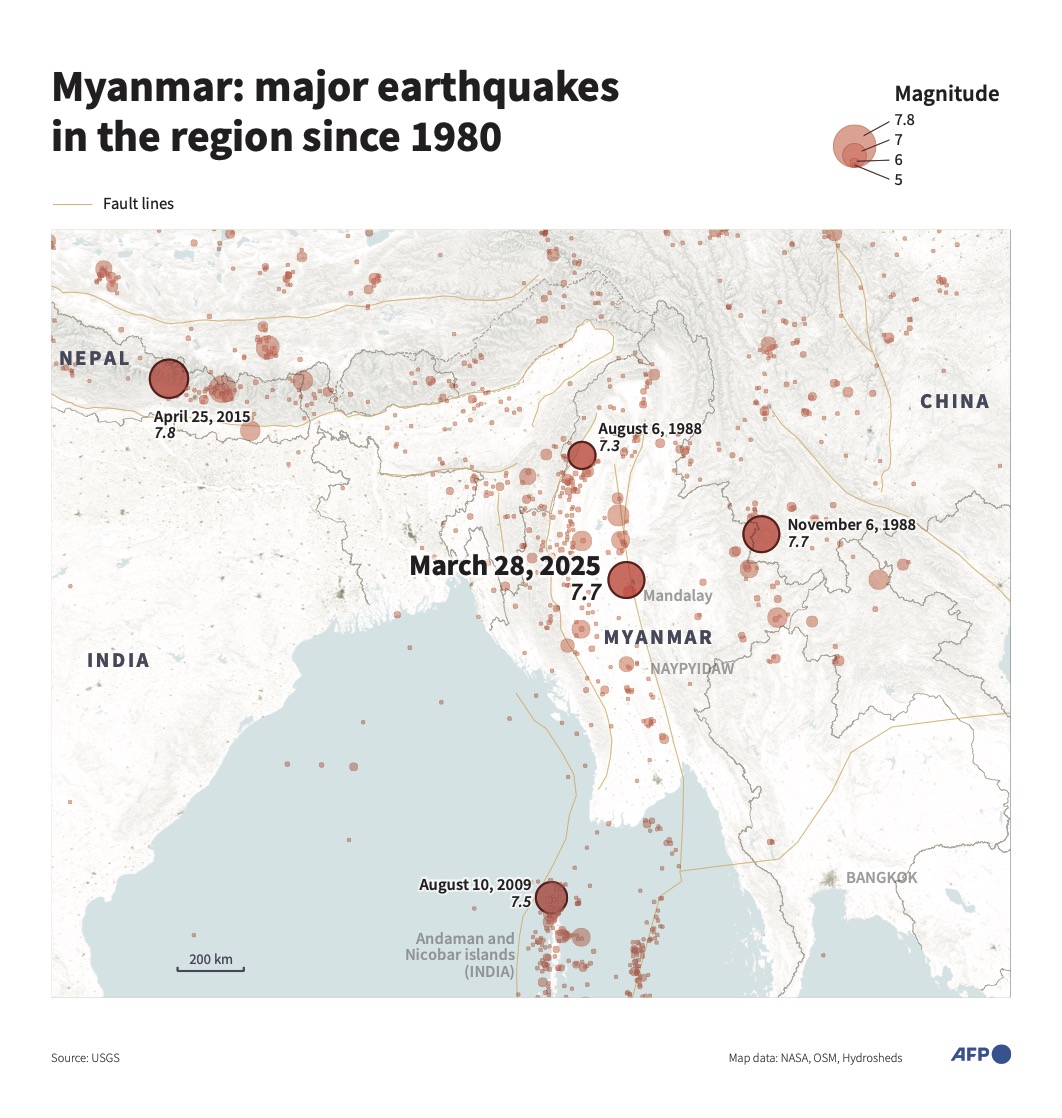LONDON: London’s Grenfell Tower — where 72 people died in 2017 in Britain’s worst residential fire since World War II — is to be demolished, the UK government confirmed on Friday.
The move, which is expected to take two years, has angered some survivors and families of those killed in the massive inferno, which destroyed the 24-story block in the west of Britain’s capital.
“Grenfell Tower will be carefully taken down to the ground,” the government said in a statement, confirming what victims’ groups said Thursday they had been told.
The work will start after the eighth anniversary of the blaze on June 14 and will be done carefully to ensure that materials can be included in any future memorial, the statement said.
The government said safety was the primary reason for the demolition.
“It remains stable because of the measures put in place to protect it, but even with installation of additional props, the condition of the building will continue to worsen over time,” the statement said.
“Engineers also advise it is not practicable to retain many of the floors of the building in place as part of a memorial that must last in perpetuity.”
The fire started in a faulty freezer, spreading rapidly due to highly combustible cladding fixed to the building’s exterior.
An public inquiry last year found the 72 deaths were “all avoidable” and blamed the “systematic dishonesty” of building firms.
It also revealed decades-long government and regulatory failures.
Since the inquiry and report, victims’ groups have criticized the government for failing to implement fire safety recommendations swiftly enough, including removing similar cladding from other buildings.
Families have also condemned the delay in bringing criminal charges against those blamed for the disaster in the inquiry.
The decision to demolish the building divided victim groups.
Grenfell United, which represents some of the survivors and families, said on Thursday the decision as “disgraceful” and that victims were ignored by a short consultation.
However, Grenfell Next of Kin said it was a “sensitive decision” which “came after a thorough engagement process” and was informed by “safety concerns” surrounding the structural integrity of the scaffolded remains of the building.
The government insisted that deputy prime minister Angela Rayner, who also holds the housing brief, has offered the community several discussions online and in-person.
“It is clear from conversations it remains a sacred site. It is also clear that there is not a consensus about what should happen to it,” the government said in its statement.
“Being able to see the tower every day helps some people continue to feel close to those they lost. For others it is a painful reminder of what happened and is having a daily impact on some members of the community.”
London’s Grenfell Tower to be taken down after deadly 2017 fire
https://arab.news/v8y8w
London’s Grenfell Tower to be taken down after deadly 2017 fire

- The move has angered some survivors and families of those killed in the massive inferno
- “Grenfell Tower will be carefully taken down to the ground,” the government said
Aftershocks rattle Mandalay as rescuers search for survivors in Myanmar quake

- Myanmar's junta said at least 1,644 people were killed, more than 3,400 injured, and at least 139 more missing
- The junta issued an exceptionally rare appeal for international aid on Friday, indicating the severity of the calamity
MANDALAY, Myanmar: Residents scrambled desperately through collapsed buildings Sunday searching for survivors as aftershocks rattled the devastated city of Mandalay, two days after a massive earthquake killed more than 1,600 people in Myanmar and at least 11 in neighboring Thailand.
The initial 7.7-magnitude quake struck near the central Myanmar city of Mandalay early Friday afternoon, followed minutes later by a 6.7-magnitude aftershock.
The tremors collapsed buildings, downed bridges and buckled roads, with mass destruction seen in the city of more than 1.7 million people.
As dawn broke Sunday, tea shop owner Win Lwin picked his way through the remains of a collapsed restaurant on a main road in his neighborhood, tossing bricks aside one by one.
“About seven people died here” when the quake struck Friday, he told AFP. “I’m looking for more bodies but I know there cannot be any survivors.
“We don’t know how many bodies there could be but we are looking.”
About an hour later, a small aftershock struck, sending people scurrying out of a hotel for safety, following a similar tremor felt late Saturday evening.
Truckloads of firemen gathered at one of Mandalay’s main fire stations to be dispatched to sites around the city.
The night before, rescuers had pulled a woman out alive from the wreckage of a collapsed apartment building, with applause ringing out as she was carried by stretcher to an ambulance.
Myanmar’s ruling junta said in a statement Saturday that at least 1,644 people were killed and more than 3,400 injured in the country, with at least 139 more missing.
But with unreliable communications, the true scale of the disaster remains unclear in the isolated military-ruled state, and the toll is expected to rise significantly.
Junta chief Min Aung Hlaing issued an exceptionally rare appeal for international aid on Friday, indicating the severity of the calamity.
Previous military governments have shunned foreign assistance, even after major natural disasters.
Myanmar has already been ravaged by four years of civil war sparked by a military coup in 2021.
Anti-junta fighters in the country have declared a two-week partial ceasefire in quake-affected regions starting Sunday, the shadow “National Unity Government” said in a statement.
The government in exile said it would “collaborate with the UN and NGOs to ensure security, transportation, and the establishment of temporary rescue and medical camps” in areas that it controls, according to the statement, which was released on social media.
Aid agencies have warned that Myanmar is unprepared to deal with a disaster of this magnitude.
Some 3.5 million people were displaced by the raging civil war, many at risk of hunger, even before the quake struck.
Across the border in Thailand, rescuers in Bangkok worked Sunday to pluck out survivors trapped when a 30-story skyscraper under construction collapsed after the Friday earthquake.
At least 11 people have been killed in the Thai capital, with dozens more still trapped under the immense pile of debris where the skyscraper once stood.
Bangkok authorities were expected to release another statement at 9 am (0200 GMT), with fears of a further toll increase.
Workers at the site used large mechanical diggers in an attempt to find victims still trapped on Sunday morning.
Sniffer dogs and thermal imaging drones have also been deployed to seek signs of life in the collapsed building, close to the Chatuchak weekend market popular among tourists.
Authorities said they would be deploying engineers to assess and repair 165 damaged buildings in the city on Sunday.
Trump says ‘couldn’t care less’ if auto prices rise

- Trump has imposed a blanket 25 percent import tariff on cars and light trucks made outside the United States
- “I hope they raise their prices, because if they do, people are gonna buy American-made cars,” he said
WASHINGTON: US President Donald Trump declared on Saturday that he “couldn’t care less” if automakers increase car prices for Americans in the wake of his imposition of import tariffs.
There have been reports that Trump threatened auto executives with reprisals if prices jump, but he told NBC News that increasing prices would simply help US-based manufacturers.
“I couldn’t care less. I hope they raise their prices, because if they do, people are gonna buy American-made cars. We have plenty,” he told NBC host Kristen Welker.
On Thursday, Trump imposed a blanket 25 percent import tariff on cars and light trucks made outside the United States, due to take effect on April 3.
Tariffs will be delayed for car parts from countries covered by US trade pact with Mexico and Canada as officials try to disentangle the mixed supply chain.
But otherwise Trump intends for the import levy to be permanent, in order to boost US production and, in his view, save the American auto industry.
Despite his boosterism, however, share prices of the biggest US automakers have suffered and experts have warned that price rises will hit American consumers.
Asked by NBC News what his message would be to worried auto executives, Trump said: “The message is ‘congratulations.’“
“If you make your car in the United States, you’re going to make a lot of money.”
US defense chief Hegseth says ‘warrior’ Japan indispensable to deter China

TOKYO: US Defense Secretary Pete Hegseth said on Sunday that Japan was indispensable in tackling Chinese aggression by helping Washington establish a “credible” deterrence in the region, including across the Taiwan Strait.
“We share a warrior ethos that defines our forces,” Hegseth told Japanese Defense Minister Gen Nakatani at a meeting in Tokyo.
Calling Japan a “cornerstone of peace and security in the Indo-Pacific,” the Pentagon indicated that suggested President Donald Trump’s government would, like past administrations, continue to work closely with its key Asian ally.
Japan hosts around 50,000 US military personnel, squadrons of fighter squadrons and Washington’s only forward deployed aircraft carrier strike group along a 3,000-km (1,900-mile) archipelago that helps hem in Chinese military power.
Hegseth’s praise of Japan contrasts with the criticism he levelled at European allies in February, telling them they should not assume the US presence there would last forever.

Hegseth, who is in Asia on his first official visit, traveled to Japan from the Philippines. On Saturday he attended a memorial service on Iwo Jima, the site 80 years ago of fierce fighting between US and Japanese forces during World War Two.
Ukraine accuses Russia of ‘war crime’ with military hospital strike

- Ukrainian army statement said among the casualties were military personnel undergoing treatment at the medical center
- Moscow has rejected a joint US-Ukrainian proposal for an unconditional and full ceasefire, stepping up instead its offensive
KYIV: Ukraine accused Russia on Saturday of committing a “war crime” during a massive attack on the city of Kharkiv, which included strikes on a military hospital that wounded personnel undergoing treatment.
“The hospital building and nearby residential buildings were damaged by a Shahed drone,” the Ukrainian army said in a statement.
“According to preliminary reports, there are casualties among the military personnel who were undergoing treatment at the medical center,” it added.
Kyiv does not typically reveal data on military casualties and did not say how many soldiers were wounded.
It accused Russia of having carried out a “war crime” and “violating the norms of international humanitarian law.”
The Ukrainian emergency services said the “massive attack” on the northeastern city also destroyed residential and office buildings.
Governor Oleg Synegubov said two people were killed: a 67-year-old man and a 70-year-old woman. Another 25 people were wounded, including children, he added.
The latest deadly strikes on Kharkiv come as US President Donald Trump’s administration pushes for a speedy end to the more than three-year war, holding talks with both Russia and Ukraine.
Moscow has rejected a joint US-Ukrainian proposal for an unconditional and full ceasefire, while Ukraine has accused Russia of dragging out talks with no intention of halting its offensive.
According to Kyiv, a ceasefire agreeing to halt strikes in the Black Sea came into effect last week, but the Kremlin said the agreement will come into force only after the lifting of restrictions on its agriculture sector.
The science behind the powerful earthquake in Myanmar and Thailand

SINGAPORE: A powerful earthquake of magnitude 7.7 centered in the Sagaing region near the Myanmar city of Mandalay caused extensive damage in that country and also shook neighboring Thailand on Friday.
How vulnerable is Myanmar to earthquakes?
Myanmar lies on the boundary between two tectonic plates and is one of the world’s most seismically active countries, although large and destructive earthquakes have been relatively rare in the Sagaing region.
“The plate boundary between the India Plate and Eurasia Plate runs approximately north-south, cutting through the middle of the country,” said Joanna Faure Walker, a professor and earthquake expert at University College London.
She said the plates move past each other horizontally at different speeds. While this causes “strike slip” quakes that are normally less powerful than those seen in “subduction zones” like Sumatra, where one plate slides under another, they can still reach magnitudes of 7 to 8.

Why was Friday’s quake so damaging?
Sagaing has been hit by several quakes in recent years, with a 6.8 magnitude event causing at least 26 deaths and dozens of injuries in late 2012.
But Friday’s event was “probably the biggest” to hit Myanmar’s mainland in three quarters of a century, said Bill McGuire, another earthquake expert at UCL.
Roger Musson, honorary research fellow at the British Geological Survey, told Reuters that the shallow depth of the quake meant the damage would be more severe. The quake’s epicenter was at a depth of just 10 km (6.2 miles), according to the United States Geological Survey.
“This is very damaging because it has occurred at a shallow depth, so the shockwaves are not dissipated as they go from the focus of the earthquake up to the surface. The buildings received the full force of the shaking.”
“It’s important not to be focused on epicenters because the seismic waves don’t radiate out from the epicenter — they radiate out from the whole line of the fault,” he added.

How prepared was Myanmar?
The USGS Earthquake Hazards Program said on Friday that fatalities could be between 10,000 and 100,000 people, and the economic impact could be as high as 70 percent of Myanmar’s GDP.
Musson said such forecasts are based on data from past earthquakes and on Myanmar’s size, location and overall quake readiness.
The relative rarity of large seismic events in the Sagaing region — which is close to heavily populated Mandalay — means that infrastructure had not been built to withstand them. That means the damage could end up being far worse.
Musson said that the last major quake to hit the region was in 1956, and homes are unlikely to have been built to withstand seismic forces as powerful as those that hit on Friday.
“Most of the seismicity in Myanmar is further to the west whereas this is running down the center of the country,” he said.



















